AD-FMCLIDAR1-EBZ Accelerating LiDAR Development
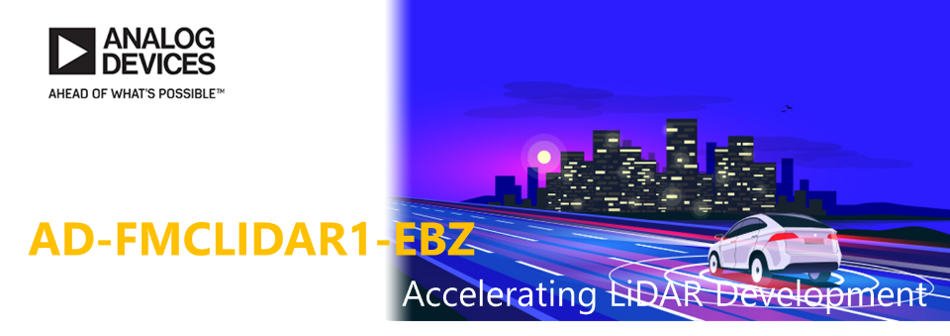
What is LiDAR?
LiDAR stands for abbreviation of "Light Detection and Ranging." It is an optical sensor technology that measures the distance to an object by irradiating it with laser light and observing the reflected light.
As shown in the table below, there are various types of distance measurement sensors, and it is necessary to choose the most appropriate method according to the application. LiDAR is one of the most popular solutions for automated driving and AGVs. However, implementation requires complex know - how and technology.
This article introduces you to Analog Devices' prototyping platform for LiDAR applications, which reduces the barriers to LiDAR deployment and accelerates development.
| Method | Benefits | Disadvantages | Optimal use |
|---|---|---|---|
| Vision (Camera) | Maximum resolution Color information |
Night Bad weather Range |
Target Classification |
| Ultrasonic sonar | Regardless of weather Low cost |
Distance Range (Short) Minimum resolution Response speed |
Slow target Near Distance |
| Radar | Regardless of weather Measurement range (maximum) Velocity measurement and size estimation |
Low resolution | Target detection Target tracking |
| LiDAR | High resolution Measuring range |
Bad weather Target color dependence |
3D Mapping Initial target classification Obstacle detection |
Platform "AD-FMCLIDAR1-EBZ" for LiDAR Developers
Analog Devices provides AD-FMCLIDAR1-EBZ as a platform for LiDAR developers.
By taking advantage of the company's proprietary high - speed AD technology, TIA (transimpedance amplifier), and APD (avalanche photodiode) interconnection know - how, LiDAR technology with improved noise floor and bandwidth can realize object detection with higher over longer distances.
AD-FMCLIDAR1-EBZ has the following three major characteristics.
- Modular platform that is easy to customize for your applications
- Excellent hardware performance for LiDAR development
- Extensive software development support
Modular platform that is easy to customize for your needs
The development of LiDAR requires the optimization of the range, field of view, optical architecture, etc. according to the application.
The AD-FMCLIDAR1-EBZ consists of three boards : a laser board, an analog front - end board, and a data acquisition board. Each module can be customized according to individual needs.
During the evaluation, connect to the recommended FPGA board, such as Arria10 SoC.
The following describes the three boards that make up AD-FMCLIDAR1-EBZ.
Data acquisition substrate
- A board with AD9094 (ADC) for high - speed data Lee Jung.
- The FMC connector can be easily connected to the FPGA board, and the analog front board can be directly connected to the laser board.
Laser substrate
- A laser emitting board with four lasers and an optimal driver and power supply.
- It is mechanically connected to the analog front board and electrically connected to the data access Lee Jung board via a cable.
- It is also possible to change the field of view of the laser.
Analog front end substrate
- A substrate that senses the reflected laser, amplifies it, and transmits the signal to the data acquisition substrate.
- 16 ch APD (avalanche photodiode) and 4 ch TIA (transimpedance amplifier)
- LTC6561 are installed.
- You can customize optical components based on individual use cases.
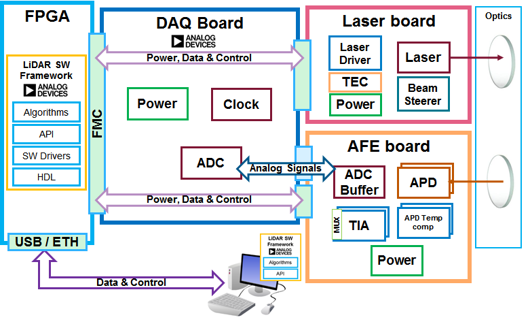
Excellent hardware performance for LiDAR development
AD-FMCLIDAR1-EBZ has the hardware capabilities required for LiDAR development.
The main characteristics are :
- 1D non - scan detector
- Wavelength : 905 nm
- Range : 1 ~ 10m (when light is not used) Can be extended to 60m or more when using light)
- Horizontal resolution 16 pixels
- FOV : laser FOV 15 (horizontal) x 30 (vertical)
- Up to 1 GSPS data sampling on 4 channels
- Complies with Class I laser safety standards
- Standardized FMC high pin count (HPC) connectors can be plugged into selected FPGA boards
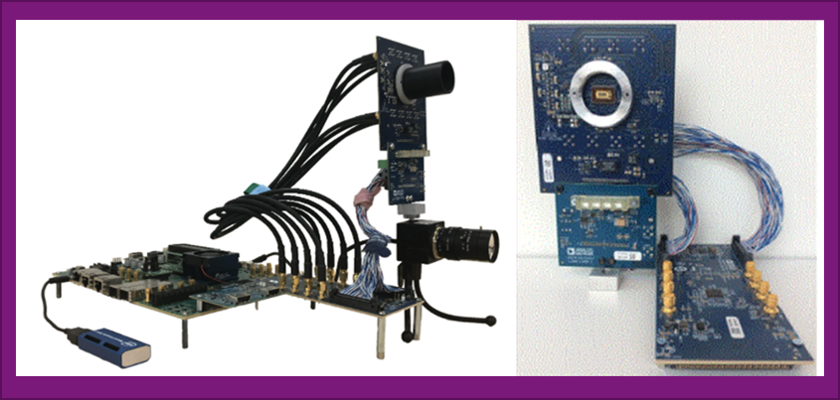
Extensive software development support
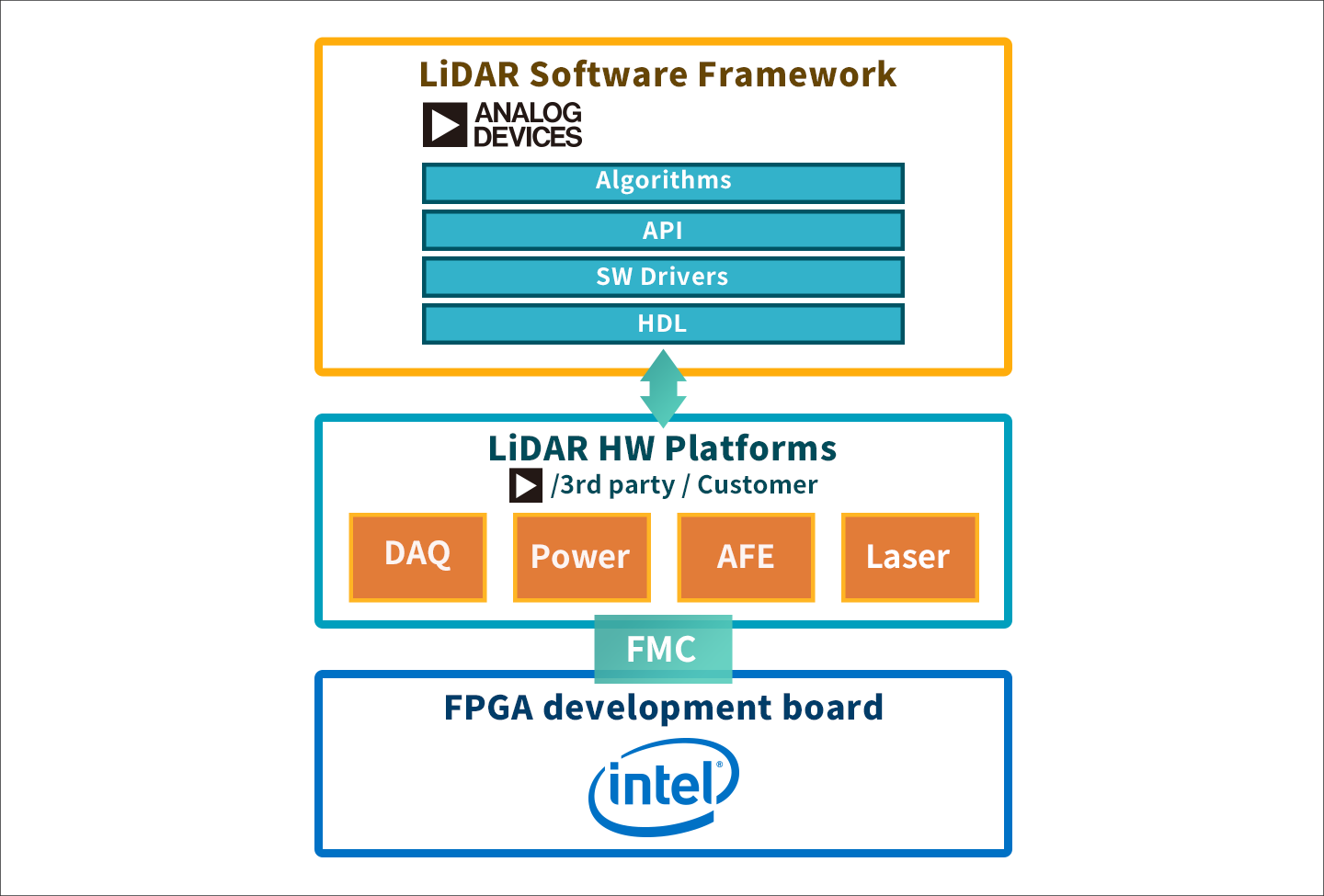
LiDAR also requires a lot of resources for software development.
AD-FMCLIDAR1-EBZ provides support for a variety of software development efforts to help reduce development time, including :
- A fully open source software framework that can be integrated with customer design
- Licensable JESD204 interface framework
- Matlab and Python wrappers
- System control and data acquisition acquisition API for the detector
- Support for Linux, Windows and Mac OS
- Sample applications for MATLAB ®, Simulink ®, C/C + +, and Python
- HDL reference design and driver to enable development in 0 days
Application Example
- ADAS
- Drone / UAV
- Robots
- Industrial automation
- SLAM (simultaneous self - location map acquisition)
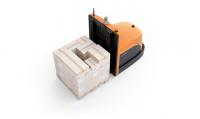 |
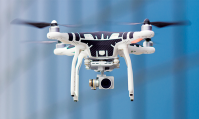 |
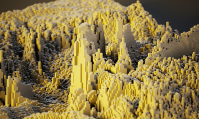 |

